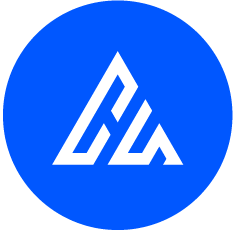
It’s 2022, and most entrepreneurs are fully aware that they need search engine optimization to give their businesses a leg up. By utilizing its power, they can drive more traffic, increase SERPs, and improve conversion rates. But what company owners (and even some digital marketers) don’t realize is that SEO is not that simple to master. A proper SEO strategy is required to bring about any tangible results.
In this article, I explain how to build a winning SEO strategy in five fundamental steps. With these simple steps in mind, you will turn your site (or your client’s site) into an effective revenue generator. Let’s take a peek behind the Search Engine Optimization curtain.
1. Select Pages to Optimize & Promote
Search engine optimization can cost more than you might think, especially if you try to gain a higher rank in competitive niches (i.e. legal services, real estate, insurance, weight loss, etc.). An efficient, cost-effective SEO strategy is all about your ability to prioritize. So, as a starting point, select only several pages to promote and optimize.
What pages are these? Well, it depends on your industry and specialization. If you are an e-commerce website, focus on your most competitive products. If you are a service company, select your first-rate offer or service. If you are a clinic, go with your most popular procedures. And so on and so forth.
An important factor to consider is the performance of these selected pages in search. For instance, if you want to optimize and promote two service pages but have the budget for only one, choose the page that already ranks better.
Trying to cover all pages at once is useless. As a digital marketer, you are limited in time and resources, so keep your focus on the targeted pages. You can improve the rank of your key pages which, in turn, will give a substantial SERP boost to your site.
2. Run a Competitor Analysis
After you have selected which pages to target, you need to analyze what your competitors are doing to break into the top search results. Look at their on-page and off-page tactics.
On-page Factors to Analyze
- Keywords (in page elements and content)
- URLs
- Titles
- Headlines and subheads
- Images and alt tags
- Meta descriptions
- Content structure
- Content length
- Widgets and plugins (i.e. social buttons)
- Load speed
- Mobile-friendliness
Off-page Factors to Analyze
- Number of backlinks leading to the given targeted page
- Types of backlinks (e.g. directories, listings, blog mentions, etc.)
Pay special attention to keywords. If your competitors are ranked in the top ten search results on Google and you are not, most likely they have done a better job with keywords than you. Your goal is to right your wrong by sprinkling your targeted pages with additional keyword synonyms, latent semantic indexing keywords, and long-tail keywords. Rely on tools like Ahrefs, Moz, and the Google AdWords keyword planner for research.
You can draw many insights from links as well. To learn more about the links your competitors use on their targeted pages, I recommend using Ahrefs’ site explorer. Just paste a URL into the analysis bar, select “Prefix” from the drop-down list, press the search icon, and access the “Backlinks” section of the report. You will get a complete list of backlinks to the targeted page.
3. Compare Strategies to Figure Out What to Improve
At this stage, you should look into the way Search Engine Optimization is done on your site versus competitor sites. Basically, you need to compare on-page and off-page optimization tactics and figure out what your targeted pages lack.
To facilitate this process, answer the following questions:
- What main keyword(s) do they use on targeted pages?
- Do they use LSIs (Latent Semantic Indexing)? How many?
- What is the keyword density?
- Does the main keyword occur within the first 100 words?
- Are the keywords used in URLs, titles, headlines, and subheads?
- Do alt tags contain the main keyword or LSIs?
- Are meta descriptions properly written? How?
- What is the content structure? Content length?
- Are there any visual elements used? How are these visuals optimized for search?
- Are there enough bulleted lists and white space?
- Do the pages feature social buttons? Comments section?
- What kind of external and internal links are used?
- How are these links placed in content?
- What is the load time?
- Are the pages optimized for mobile?
- Do they have AMP?
- Do the pages feature pop-ups?
- What are page age and authority for competitors’ pages?
- Is content on the pages fresh?
After all of these questions are answered, jot down a list of what every targeted page misses. These can be specific keywords, trustworthy links, fancy visuals, proper page structure, etc. Make sure you really understand what your competitors do better than you. Then, you can build on their success.
4. Run the Analysis of Behavior Factors on the Targeted Pages
Once you have figured out what your competitors do better with on-page and off-page optimization, switch your attention to factors such as design, usability, and user behavior on the targeted pages. Analyzing these factors will help you figure out why your pages either maintain good search standing or fail to yield optimal results. For these factors, you are better off running a behavior analysis.
I don’t recommend using any fancy tools. Just access your Google Analytics account and review the following metrics:
- Bounce Rate
- Average Time on Page
- Goals (check “Conversions” tab)
These will be enough to help you understand how visitors interact with your pages, content, conversion forms, and CTAs. However, sometimes GA doesn’t help as much as you need it to.
Let’s imagine that your targeted page has a high bounce rate, bad time on page, and no conversions, even after you have done all of your optimization tweaks. Basically, you have no idea what causes visitors to leave. In situations like this, it makes sense to use heatmap tools like CrazyEgg or Lucky Orange.
Heatmaps are perfect to visualize and analyze how visitors read and skim content, fill in signup, contact us and subscribe forms, press buttons, and click links. Use them wisely to gain a deeper understanding of your true pain points (like unimpressive images, hard-to-read fonts, wrong CTA colors, or boring headlines). And don’t forget to write down all the things you can realistically fix, improve, or add to your site afterward.
5. Implement the Strategy You’ve Created
At this point, when all data is collected and analyzed, you can start harnessing your SEO magic to its fullest extent:
- Optimize one targeted page after another (Steps 2, 3, and 4 will help).
- Check to see if the optimization helps your pages perform better in search. If not, figure out why.
- Use what you’ve learned to outpace industry standards (craft authentic optimization strategies to convince others to copy your tactics).
Don’t forget that SEO is an ongoing process. Keep improving your pages and analyzing what your competitors do to stay one step ahead. This way, your SEO strategy will continue to bring in revenue and value.




Good post. I learn something totally new and challenging on websites I stumbleupon on a daily basis. It will always be useful to read content from other authors and use something from their websites.